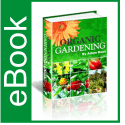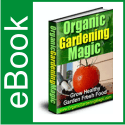Understanding Container Vegetable Gardening Quickly And Easily
Understanding Container Vegetable Gardening Quickly And Easily
Article by Trevor Dalley
Cool-season vegetables include broccoli, cabbage, carrot, lettuce, onion and spinach, among others.
These are hardy or frost-tolerant plants and germinate in cold soil.
They can be planted in the fall, winter or early spring depending on location.
For best quality these crops need to mature during cooler periods rather than in the heat of the summer.
Having fresh vegetables around on a regular basis is definitely wonderful and it allows you to have many healthy meals.
Although most vegetables can be grown in a suitable container, there are some basic tips that apply to container vegetable gardening to ensure your crop survives.
Most vegetables require full sun for at least six hours a day.
So you will need to locate your vegetable container in a suitably warm, sunny position.
Having said that, if you live in a particularly hot area, you may need to consider some shade for your vegetables in the middle of the day, otherwise they may scorch and die.
For this reason metal containers are not advisable as the roots of the vegetables will cook.
The same applies to dark colored plastic garden pots or ceramics.
Remember that vegetables need at least six hours of sun on average.
Place them where the plants will get that or your crop will not be as good as it could be.
When the vegetables are harvested and the plants are spent, throw out the soil and plants, or compost them.
Do not turn right around and use the soil again or you could spread pests or disease among your new plants.
There are many vegetables that cen be grown in containers if you don’t have space for regular vegetable gardening.
Check out our recommendations.
Traditionally, vegetables are grown in straight rows with each row containing a particular type of veggie.
Usually a 2 foot gap is left between each row to facilitate watering and harvesting.
You can use a string to ensure that you plant the seeds in a straight line.
Anyone can grow vegetables and fruits at home.
Growing plants in bottles is very easy.
A number of examples are given. Different sizes and forms of bottles can be used.
Setting up a series of bottle towers, one can even have a vertical kitchen garden in the smallest space, on a patio or a balcony, against a wall or a trellis.
With some imagination, everyone can set up her or his own little garden with recycled bottles, thus combating hunger, malnutrition and environmental pollution.
Pots: Container vegetables are very forgiving.
Actually, almost the only two requirements are drainage holes and enough room. (Take a look at the linked articles to learn more about room).
Half-barrels, glazed ceramic pots, plastic pots… you should utilize just about anything.
It actually relies on the 2 things I discussed, and your taste.
Growing your own vegetables also is a very satisfying and relaxing hobby.
Knowing exactly what has gone into growing your vegetables is very reassuring.
Starting your own vegetable garden can be quite daunting especially vegetable gardening for beginners.
Growing vegetables at home has always been popular, but has had a large resurgence in the last few years.
This is partly due to rising food prices, but mainly in the pursuit of fresh organic produce.
Here I have suggested some vegetable gardening tips that can be applied to small or large gardens or even to allotment gardening.
www.bestgardeningadvice.co.uk
In this particular Gardening All Year Round program you’ll learn about a new process of Gardening which will revolutionize how you will employ Gardening Projects.
This unique material is truly one of a kind. No longer will you be bogged down discovering the same things over and over again. http://bestgardeningadvice.co.uk
About the Author
To learn easy methods to use a highly effective Gardening technique to become far more successful in your home Diy or Landscape Design for your FREE Ebook and Gardening Tips please browse the information at Gardening.www.bestgardeningadvice.co.uk
Use and distribution of this article is subject to our Publisher Guidelines
whereby the original author’s information and copyright must be included.

 June 3, 2012
June 3, 2012 







